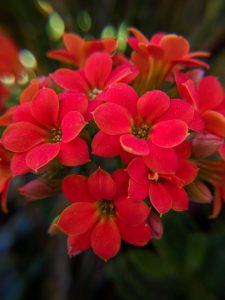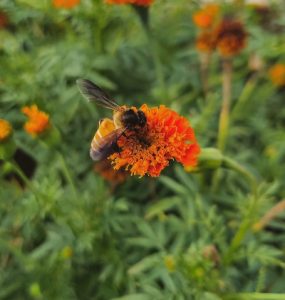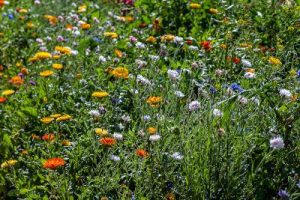Tips for summer gardening: Jump-Start Your Garden This Summer is by our regular correspondent, Sarah-Jane Ellis
If you’ve noticed that bees are finally making an appearance in your garden again, it can only mean it’s time to get back out there and make an appearance of your own – you can’t expect the bees to do all the work! Although prepping your garden for spring and summer is best done earlier in the year, it’s still early enough to inject some life into your garden.
Follow our beginners’ tips and you’ll be feeling green-thumbed in no time.
Clear the Debris
Clearing away the debris from last season is the easiest way to get started. Insects can hide in the old plant debris, causing problems for any garden. This debris can also aid in creating soil-borne diseases.
Wish Away the Weeds

OK, you’re going to have to do a little more than wish! Weeds still survive the winter, even if the cold weather reduces their activity. Summer and winter annual weeds have a habit of leaving their seeds in the soil before dying off, sneakily sprouting once the weather warms. Clear as many weeds as possible with your hands or a good weed killer. Don’t forget you can also buy ones that you can use on a lawn without killing the grass.
Prep That Soil
You can’t have healthy plants without healthy fertile soil, which contains all the nourishment they need to thrive. Loosening the earth with a rake and adding organic matter (compost or new topsoil) is the easiest way to give new perennials their best growing chance.
Pruning Makes Perfect
Spring is the best time to prune perennial plants, shrubs, and trees to rejuvenate for summer flowering. Remember these tips before you get scissor-happy.

- Don’t remove areas of plants that are about to bloom.
- Sterilise your pruners before each use or between plant varieties to avoid spreading plant diseases.
- Prune some plants and shrubs later in the year. These include spring-blooming Spirea, Camellia, Rhododendron (including Azalea), Forsythia, Hydrangea Macrophylla (Bigleaf), Syringa (Lilac), Magnolia, Kalmia (Mountain Laurel), and Weigela.
- In general, you can remove any stems which show unhealthy or dead growth (usually about one-third of the oldest growth).
- Allow your plants to heal their wounds swiftly by adding a small amount of fertiliser to the soil.
- Banish Those Pests
Pests can be a nightmare for your garden. Check underneath leaves for bugs and flies regularly and brush off anything you can. You might need a specialist pest treatment for the stubborn ones.
Don’t Forget the Mulch
Mulch is a thick layer of material placed over the soil and around plants. Adding a new layer to any established perennial plant beds will enrich the soil with nutrients and moisture, suppress weeds and creates a physical barrier from the harsh elements.
Starter Plants

Choose your plants with a bit of forethought, considering the climate, type of soil, and sunlight your garden provides.
Some of the easiest and lowest maintenance plants to grow are:
- Vegetables: Cucumbers, peppers, tomatoes, and lettuce.
- Annuals: These are flowers that bloom for most of the summer, but need replanting each spring. These include Calendula, Cosmos, Geraniums, Sunflowers, Marigolds, Zinnias and Impatiens.
- Perennials: Plants that only bloom for a short time, but are reliable in their yearly return. Good choices are Pansies, Phlox, Purple Coneflowers, Black-eyed Susans, Daylilies and Lamb’s-ears.
Even if this is your first year gardening, I’m sure you’ll enjoy the therapeutic gardening process and take pleasure in watching your efforts bloom.
We hope you enjoyed our tips for summer gardening. For more of our gardening articles, please click here.
The magnificent feature image is by Robert Zunikoff on Unsplash.


